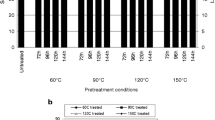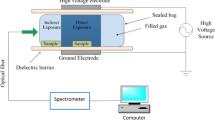Abstract
Ammonia has recently been employed in experimental tests for the treatment of corn to inactivate aflatoxin, to control molds, and as a preservative during ambient-air drying of freshly harvested high-moisture corn. When these various ammonia treatments are properly applied, no adverse effects have been found on any of the constituents of whole corn. However, in the work being reported when 0.1% or more ammonia was in contact with corn in the presence of air for more than a few days, irreversible changes occurred in the polyunsaturated lipids that were proportionate to the ammonia concentrations. The extent of the changes were dependent upon: (a) air-to-corn ratio, (b) ammonia concentration, (c) temperature, (d) corn moisture, and (e) time. The changes were characterized by a reduction in unsaturation of the lipid, by incorporation of nitrogen into the lipids, and by a consequent increase in lipid polarity. The change in polarity of these altered lipids rendered them unextractable with the usual fat solvents. Air (oxygen) and an initiating mechanism that occurs naturally in corn were required for the lipid-ammonia interaction to occur. This interaction involved only the polyunsaturated fatty acid moieties and formed a class of nitrogenous derivatives. Corn may be treated with ammonia for purposes of detoxification or preservation for long periods with no detectable adverse effects on the lipid composition, as long as headspace air is kept low during ammoniation. This may be accomplished in any of the following ways: (a) by ammonia ting the corn with a very limited headspace, (b) by ammoniating corn in a sealed bin and displacing the air in the headspace with ammonia gas, and (c) by replacing the headspace air with an inexpensive, inert gas such as nitrogen.
Similar content being viewed by others
References
Bothast, R.J., E.B. Lancaster, and C.W. Hesseltine, J. Dairy Sci. 56:241 (1973).
Lancaster, E.B., and R.J. Bothast, J. Stored Prod. Res. 12:171 (1976).
Bothast, R.J., G.H. Adams, E.E. Hastfield, and E.B. Lancaster, J. Dairy Sci. 58:386 (1975).
Nofsinger, G.W., R.J. Bothast, E.B. Lancaster, and E.B. Bagley, Trans. ASAE 20:1151 (1977).
Peplinski, A.J., O.L. Brekke, R.J. Bothast, and L.T. Black, —Ibid.. (In press).
Lancaster, E.B., G.E. Hall, and O.L. Brekke, —Ibid. 17:331 (1974).
Brekke, O.L., A.J. Peplinski, and E.B. Lancaster, —Ibid. 17:331 (1974). (In press).
Brekke, O.L., A.C. Stringfellow, and A.J. Peplinski, J. Agric. Food Chem. (In press).
Brekke, O.L., A.J. Peplinski, G.W. Nofsinger, H.F. Conway, R.R. Montgomery, R.W. Silman, V.E. Sohns, and E.B. Bagley, Trans. ASAE (In press).
Reynolds, T.M., Adv. Food Res. 12:1 (1963).
“Official and Tentative Methods of the American Oil Chemists’ Society,” Vol. I, 2nd Edition, (revised 1969), AOCS, Champaign, IL, Methods Ce 2-66 and Ca 6a-40.
Author information
Authors and Affiliations
About this article
Cite this article
Black, L.T., Spencer, G.F. & Brekke, O.L. Reactions of lipids in corn with ammonia. J Am Oil Chem Soc 55, 526–529 (1978). https://doi.org/10.1007/BF02668062
Issue Date:
DOI: https://doi.org/10.1007/BF02668062




